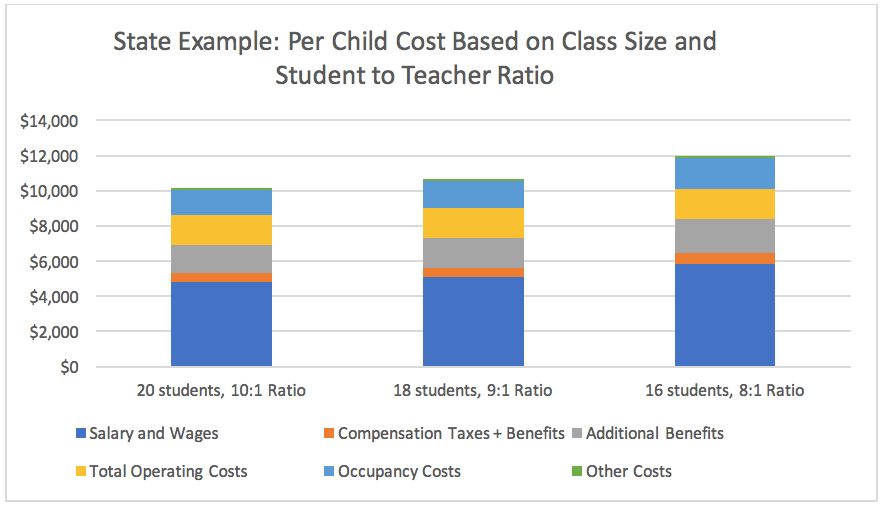Young learners need small classes and one-on-one time with teachers.

For young learners, smaller class sizes and lower staff-child ratios create conditions needed for increased levels of high-quality social and instructional interactions. A large body of literature establishes linkages between staff-child ratio, program quality, and child outcomes. With smaller classes and fewer children per teacher, children have greater opportunities for interaction with adults and can receive more individualized attention, resulting in increased learning that leads to better student outcomes.
Early education programs that have been evaluated and found to be effective all limit class sizes to fewer than 20 with teacher to child ratios of 1 to 10 or lower, including Boston’s Public School Prekindergarten Program, New Jersey’s Abbott Preschool Program, and Oklahoma’s Early Childhood Four-Year-Old Program. Small classes enable teachers to have more individual contact with each student and increase the likelihood of implementing differentiated teaching methods, resulting in meeting each student’s unique developmental needs.
Suggested Talking Points about Class Sizes and Ratios
- Studies demonstrate that class size is one of the components of a quality preschool program that produces positive outcomes for young children, with smaller groups giving children the opportunity to form meaningful relationships with adults and peers.
- Low child-to-staff ratios allow teachers to know and notice each child in the classroom and share more stimulating, responsive, warm, and supportive interactions with early learners.
- Smaller class size encourages intentional teaching that is child-centered:
- Teachers are able to provide more individualized attention, and engage in more dialogues with children—key factors in academic and social development.
- In smaller groups, child-initiated activities that foster creativity and vocabulary are more common rather than teachers managing the class by directing or scheduling activities. (Eager to Learn, National Research Council)
- Low child-to-staff ratios are critical to a child’s safety, ensuring children receive adequate care and supervision.
- Smaller class size reduces stress on teachers and can help prevent teacher turnover that can negatively influence child outcomes
Quotes from National Experts
“Teaching young children requires immense energy and relentless attention. When there are fewer children in the room, the teacher has more time to devote to each child, and managing the group requires less teacher time. As a result, teachers have opportunities to have longer conversations with each child.” W. Steven Barnett, Board of Governor’s Scholar and founder, National Institute of Early Education Research, Rutgers University
“There is general agreement among experts in the field of child development that the quality of classroom interactions between teacher and child contributes substantially to children’s learning and development.” (Bowman, Donovan, & Burns, 2001)
“High-quality ECE programs employ knowledgeable, highly skilled teachers who receive strong support and coaching, use research-based curricula, provide access to a variety of developmentally appropriate materials and activities, and have small class sizes and low child to teacher ratios.” (Barnett et al., 2016; Espinosa, 2002; Mashburn et al., 2008)
Using CPQ Data for State Specific Data
Reducing class size and student-to-teacher ratios increases the average per- child costs. To learn how to create similar graphs depicting your specific proposals, please contact CEELO.

CEELO and NIEER Resources about the costs associated with quality
From NIEER Preschool Policy Matters: Class Size: What’s the Best Fit? (Dec 2004)
